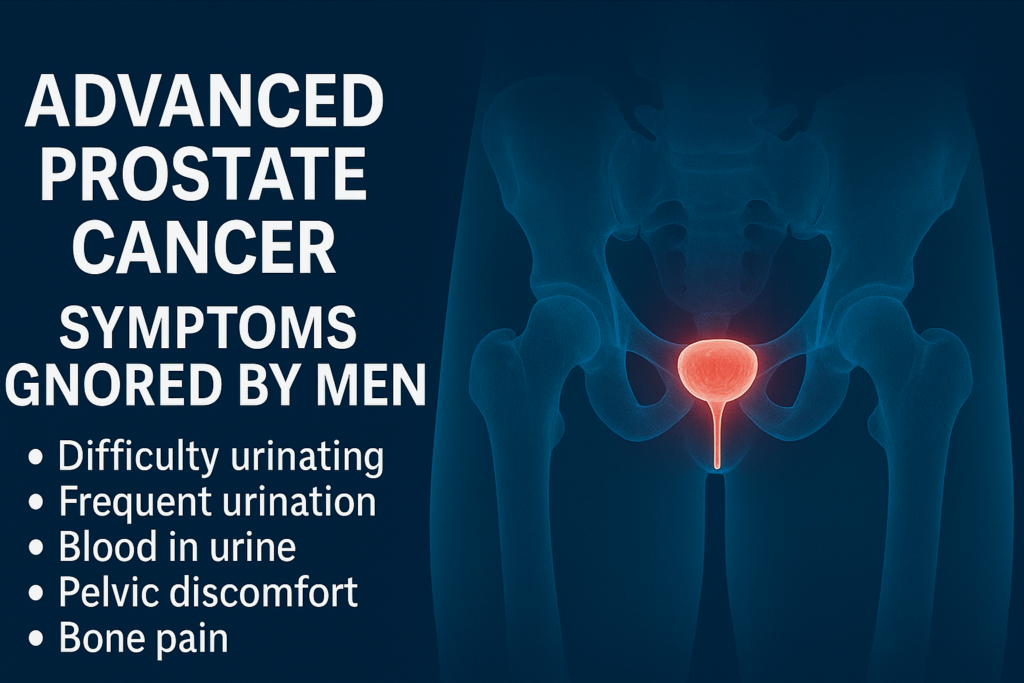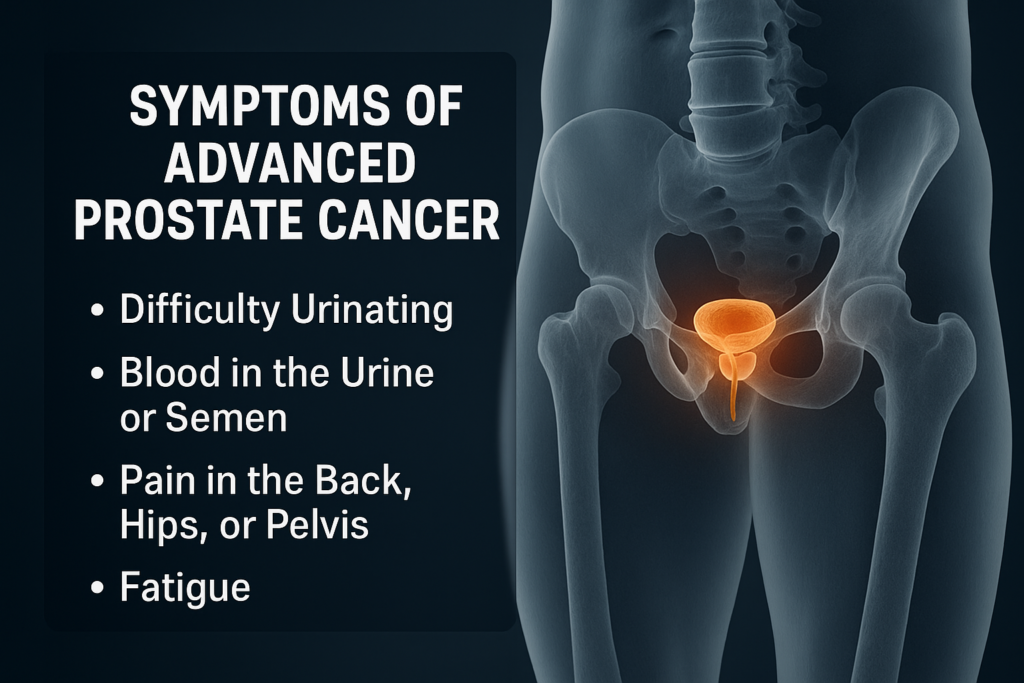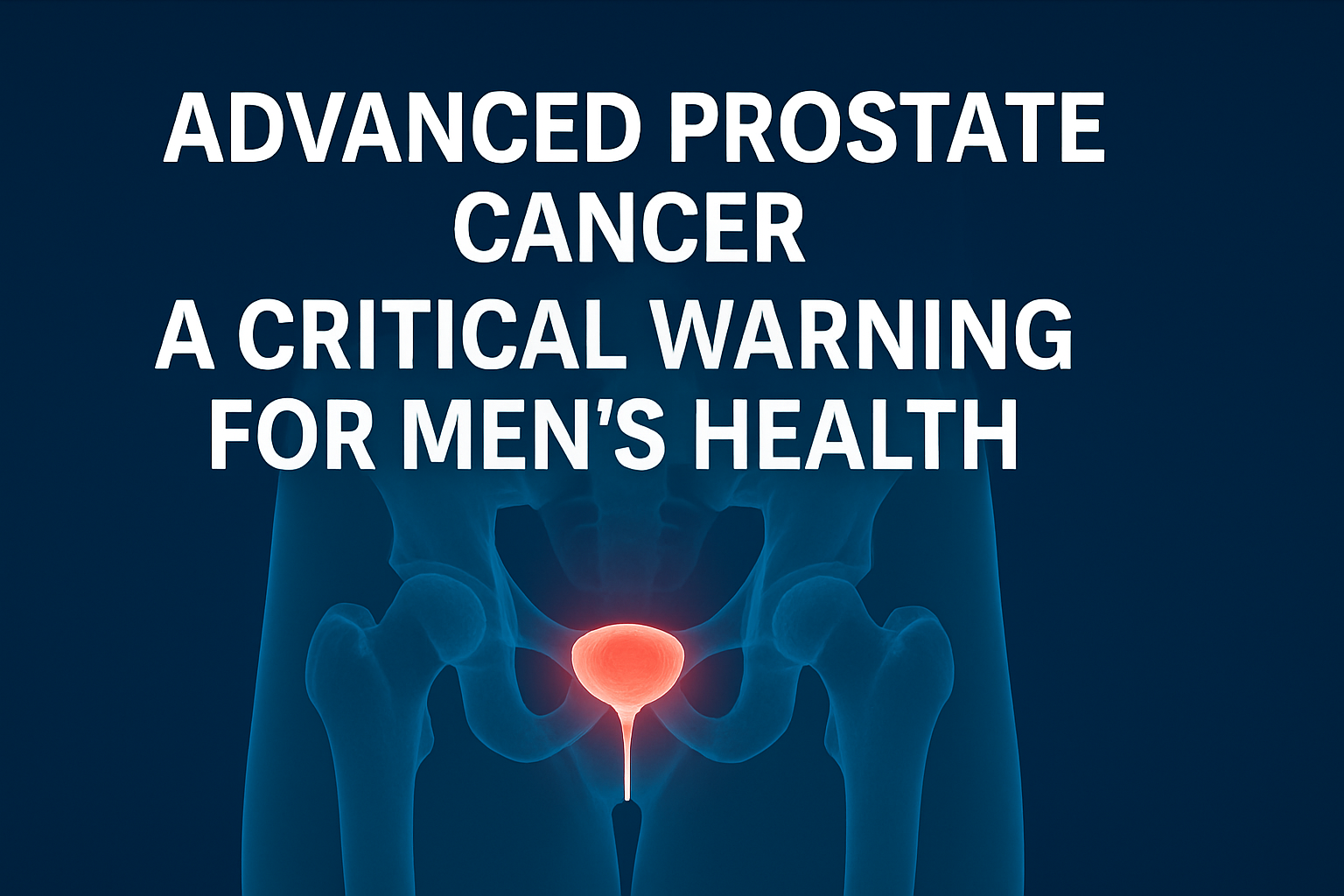Advanced Prostate Cancer: A Critical Warning for Men’s Health
Advanced prostate cancer is one of the most dangerous and silent threats to men’s health. When not diagnosed early, it can evolve aggressively, spreading to vital organs—especially the bones. The hypothetical diagnosis of a world leader like President Joe Biden serves not just as a personal tragedy, but as a global wake-up call.
The prostate is a small gland located below the bladder, responsible for producing part of the semen. Cancer develops when cells in this gland begin multiplying uncontrollably. In the early stages, prostate cancer often shows no symptoms, making medical screening essential.
Neglecting health—a common trait among men over 50—contributes to the rise in advanced prostate cancer diagnoses. Once it spreads, bones are frequently affected, leading to severe pain, spontaneous fractures, and limited mobility.
Beyond physical issues, a cultural stigma remains. Many men avoid screening tests like the PSA (prostate-specific antigen) and digital rectal exam, which are essential for early detection. This delay often results in a late-stage diagnosis with reduced survival rates.
Ignored Symptoms: When the Body Sends Clear Messages

The symptoms of advanced prostate cancer are frequently mistaken for harmless urinary issues. That confusion delays diagnosis and worsens prognosis.
- Difficulty urinating or a weak urine stream
- Frequent urination, especially at night
- Blood in urine or semen
- Persistent pelvic discomfort
- Bone pain, particularly in the hips and spine
These signs should never be ignored. Even mild symptoms should prompt immediate consultation with a urologist. The sooner the cancer is detected, the better the chances of successful treatment.
Early Diagnosis: The Line Between Life and Death

Early detection of advanced prostate cancer can dramatically change a patient’s future. The main diagnostic tools are the PSA blood test and the digital rectal exam. Despite fear and misinformation, both tests are fast, simple, and crucial.
When prostate cancer is detected early—before it spreads—it is highly treatable. According to the National Cancer Institute, the five-year survival rate for localized prostate cancer is about 90%. However, once the cancer spreads to bones or lymph nodes, that rate drops to below 30%.
Take the fictional example of Thomas, a 67-year-old man. He experienced mild pelvic pain and urinary symptoms for months but dismissed them. By the time he sought help, the cancer had spread to his vertebrae. He could no longer walk without pain, and imaging revealed widespread metastases. His story is fictional, but it reflects the reality of countless men.
Bone Metastasis: A Serious Complication
When advanced prostate cancer spreads to the bones, the consequences are serious and often irreversible. Cancerous cells travel through the bloodstream and reach the skeletal system, most often attacking:
- The spine
- The pelvis
- The femur (thigh bone)
- The ribs
Symptoms of bone metastasis include:
- Deep, persistent pain that worsens over time
- Fragile bones prone to fractures, even without trauma
- Reduced mobility and muscle weakness
- Nerve damage or spinal cord compression
This stage often requires aggressive treatment and significantly impacts the patient’s quality of life. Many lose their ability to move independently and must rely on palliative care.
Treatment Options: Hope Through Science
Treating advanced prostate cancer requires a multifaceted approach. While curing the disease may no longer be possible at this stage, various treatments can slow its progression, ease symptoms, and extend life expectancy.
Current treatment strategies include:
- Hormone therapy: suppresses testosterone, which fuels prostate cancer growth
- Chemotherapy: targets fast-growing cancer cells throughout the body
- Radiotherapy: especially effective for managing bone metastases
- Radionuclide therapy: radioactive particles target cancer in bones
- Targeted therapy: attacks specific mutations in cancer cells
- Immunotherapy: still under clinical investigation for advanced cases
- Palliative care: manages pain and improves quality of life
A promising discovery involves a diabetes medication—an SGLT2 inhibitor—that may reduce cancer recurrence. Preliminary studies suggest that this drug might hinder cancer cell growth in low-testosterone environments. Research is ongoing, but the prospects are promising.
Case Study: The Story of Thomas
Thomas delayed seeing a doctor despite clear symptoms. When he finally did, his diagnosis was grim: advanced prostate cancer with bone metastases. Chemotherapy helped manage the pain, but his mobility never fully returned.
Supported by family and his medical team, Thomas began attending support groups. He became an advocate for men’s health, encouraging others not to make the same mistake he did.
His story, though fictional, teaches three key lessons:
- Early symptoms matter
- Fear can be fatal
- Knowledge leads to prevention
Preventive Measures: Your Health, Your Responsibility
Most cases of advanced prostate cancer are preventable with routine medical care and healthy living. Here’s what men can do:
- Schedule regular screenings: yearly PSA and rectal exams after age 50 (or 45 with a family history)
- Eat a healthy diet: rich in fruits, vegetables, and whole grains
- Exercise regularly: at least 150 minutes per week
- Maintain a healthy weight
- Avoid smoking and excessive alcohol
- Manage chronic stress and get enough sleep
Awareness and Action: Break the Silence
Campaigns like “Movember” have increased awareness, but myths and fear persist. Open conversations, accurate information, and community support are essential.
Even hypothetical stories, like the imagined diagnosis of a sitting president, highlight a hard truth: cancer doesn’t care about power, status, or wealth. It targets everyone. But armed with information and early intervention, we can fight back.
Advanced prostate cancer may be aggressive, but it’s not unbeatable—especially if detected early.
Further Reading: Deepen Your Knowledge
1. Internal resource (Global Health Guide):
Can nutrition help prevent cancer? Discover foods that reduce inflammation and support prostate health:
👉 Anti-inflammatory foods that protect your health
2. Internal resource (Global Health Guide):
Stress can affect your immune system and increase cancer risk. Learn natural ways to manage stress and improve well-being:
👉 Natural techniques to relieve stress and improve health
External Reference
For comprehensive and up-to-date medical guidance on prostate cancer prevention and treatment, visit the American Cancer Society:
👉 American Cancer Society Guide on Prostate Cancer


No responses yet